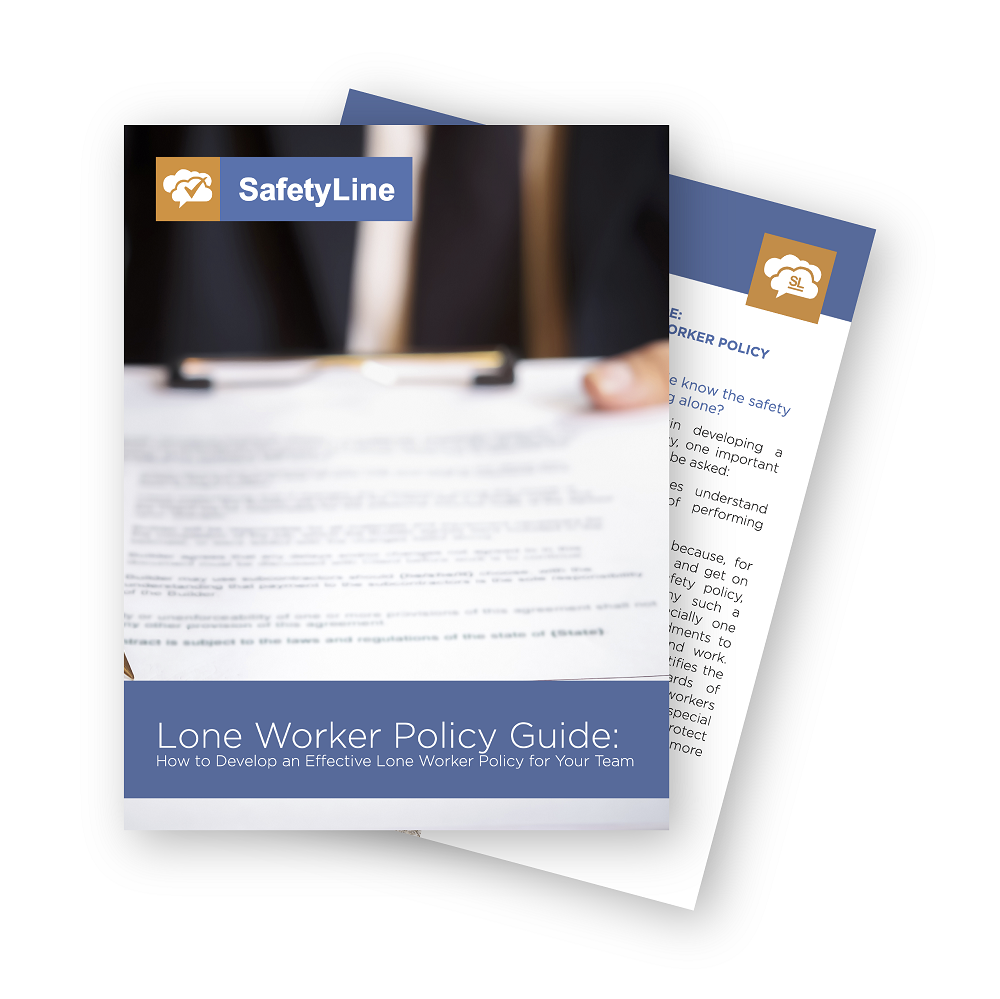Featured Resources
Lone Worker Policy Guide and Template
A lone worker policy is an effective way to ensure that your lone workers are well-educated on your company’s work-alone rules and have extensive knowledge of all workplace hazards that could be encountered on the job.
Hazard Assessment Guide
In the process of doing a hazard assessment for your workplace, it is almost a certainty you’ll learn information about the operational aspects of your organization you were unaware of before the assessment.
View eBook
Develop a Free Lone Worker Program for Small Teams
Developing a free lone worker check-in system is a simple process for small teams that any organization can implement.
View eBook
SafetyLine Blog Categories
General Safety | Lone Worker Safety | SafetyLine News and Updates | SafetyLine Product Updates | Compliance, Policy, and Regulations | Downloadable Resources |
Top Lone Worker Monitoring Tools for 2025 – Compare Features & Pricing
What are your top safety priorities for 2025? Is lone worker safety one of them? If it is a major priority within your organization, then choosing the right lone worker monitoring tool should be, too. The right technology can mean the difference between a near-miss and a tragedy—and ensure your team stays connected, compliant, and protected no matter where the job takes them.
Proactive Safety for Home Healthcare Workers
We must prioritize the safety of workers who provide essential, hands-on care, along with emotional and physical support, in patients' homes. This includes hospice and home care professionals who care for individuals who are chronically ill or disabled, requiring ongoing assistance.
These workers are vital to a healthy society, yet they face increasing challenges in their roles. To address these issues, the National Association for Home Care and Hospice (NAHC) is hosting the 2024 Home Care and Hospice Conference and Expo from October 15 to 17 in Tampa Bay, Florida, an area still recovering from the previous hurricanes.
The Pros and Cons of a Manual Lone Worker Safety System
As you read further, you will learn about the pros and cons of a manual lone worker safety system. We will also look at the benefits and costs of an automated lone worker safety system for your employees working alone.
11 Ways to Evaluate Your Lone Worker Solution
A lone worker solution is a system, service, and/or safety device that protect lone workers (people working alone and remotely). It will signal an emergency when the lone worker needs help and it monitors their well-being with safety check-ins. Let’s look at the 11 strategies to evaluate your lone worker solution.
Choosing a Workplace Panic Button System for Your Employees Safety
Panic buttons are an important occupational safety technology goes by many names: duress alarm, emergency signal, SOS alarm, personal alarm, alert button, panic alarm and most commonly, panic button. The reason there are so many names and monikers for this safety device is they are so widely used in a wide range of industries and work. Regardless of what they are called, they all are intended to one thing: raise an alarm in emergency situations when an employee requires immediate help.
SafetyLine Desktop and Web App for Remote Workers
Because teleworkers and remote desktop workers perform their jobs without the physical presence and supervision of a manager or other coworkers, employers, especially those working under a lone worker legislation, must-have solutions to monitoring the safety of their remote team. There are several project management and time tracking platforms that can help follow the work’s progress. Still, to monitor an employee’s safety, the employer should have an online worker monitoring tool available on their smartphone and the home office desktop. The advantage of having a safety monitoring app on the users desktop is that it does not require cell phone power or a battery,









